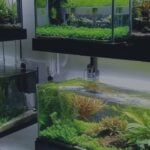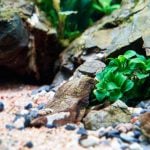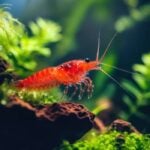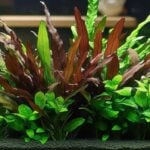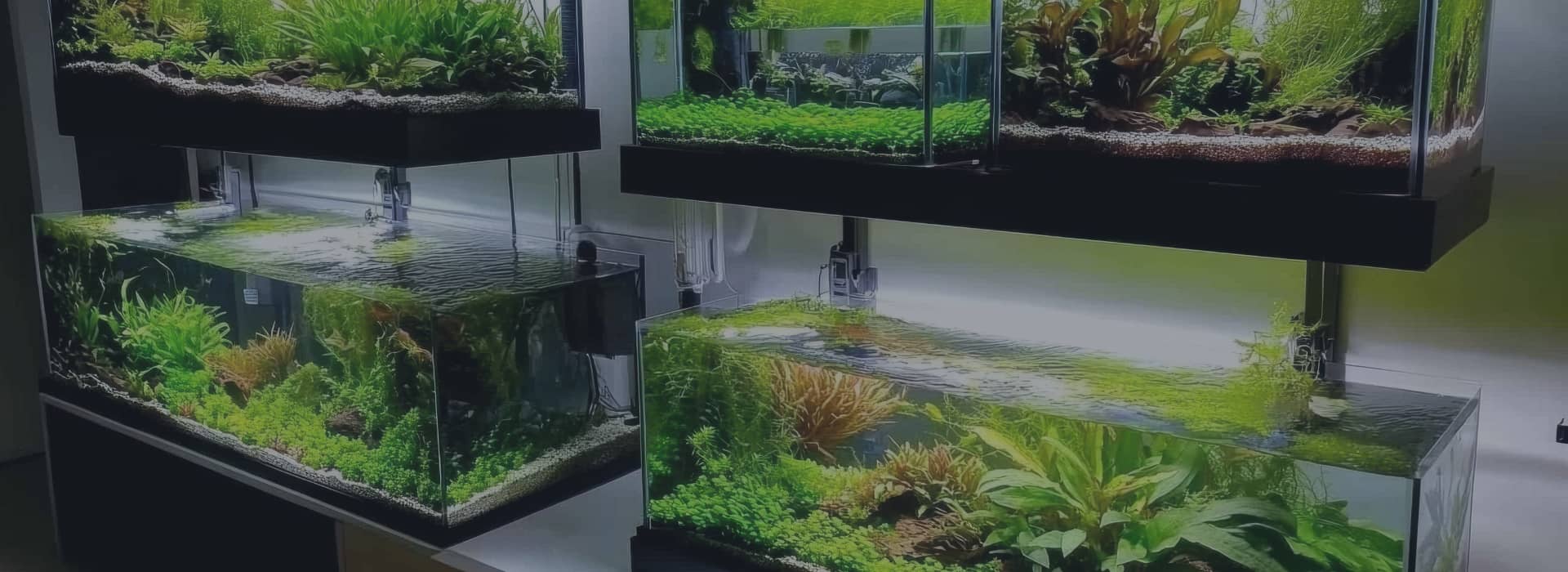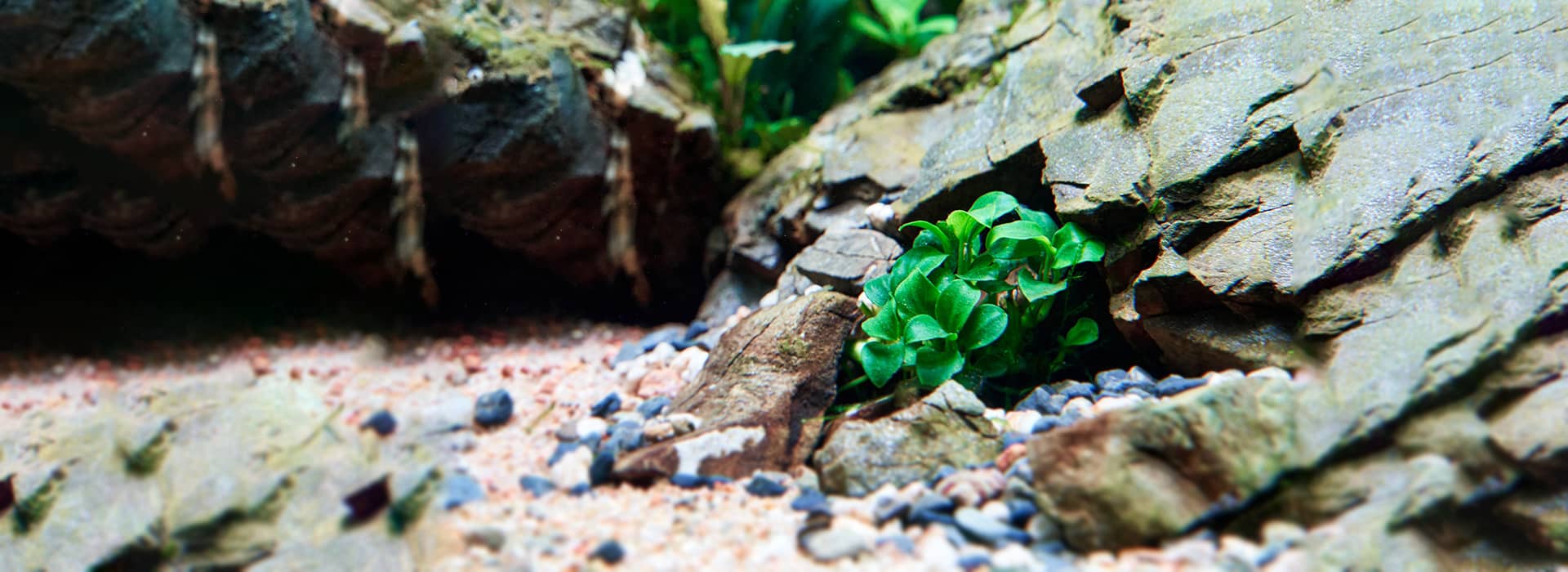Aquascaping is a form of art that replicates the beauty and complexity of natural landscapes in the aquatic environment. This practice transforms aquariums into living, breathing underwater gardens that provide a dynamic habitat for tropical fish.
Understanding Aquascaping
Aquascaping involves arranging aquatic plants, rocks, driftwood, and substrate in an aesthetically pleasing manner within an aquarium.
It’s a creative process that mimics various terrestrial scenes—from lush forests to rocky canyons. The goal is to create a harmonious and balanced ecosystem that supports the health and well-being of the fish and plant life within.
Tropical Fish Aquascaping
Tropical fish aquascaping is a specialised branch of aquascaping that focuses on creating a tropical environment.
This involves selecting plants and fish that thrive in warmer waters, typically between 74°F and 80°F. The vibrant colours and diverse behaviours of tropical fish add an extra layer of visual interest and complexity to the aquascape.
Getting Started with Aquascaping
Choosing the Right Materials
Substrate, plants, and hardscape materials like rocks and driftwood contribute to the aquarium’s visual appeal and biological balance. Substrates can range from nutrient-rich soils to inert sands, each serving different types of plants and fish.
Plants in Aquascaping
Aquatic plants play a vital role in aquascaping. They provide oxygen, filter harmful substances, and offer shelter and breeding grounds for fish. Fast-growing stem plants, carpeting plants, and floating varieties all contribute to the complexity and beauty of the aquascape.
Hardscaping: The Backbone of the Layout
Hardscaping refers to the arrangement of rocks, wood, and other non-living materials. It’s the skeleton upon which the aquascape is built. The placement of these elements is often the most challenging yet rewarding part of aquascaping, as it sets the tone for the entire layout.
Setting Up a Tropical Aquarium Tank
To set up a tropical aquarium tank for aquascaping, you’ll need to follow these steps:
- Choose the right size tank. Larger tanks are generally more stable and offer more room for creativity.
- Select a high-quality filtration system to keep the water clean and clear.
- Install a heater to maintain the appropriate temperature for tropical fish.
- Add a substrate that supports plant growth, such as aqua soil or gravel.
- Arrange your hardscape—rocks and driftwood—to form the foundation of your aquascape.
- Plant a variety of aquatic plants, considering their size, colour, and growth patterns.
- Fill the tank with dechlorinated water and let the system stabilize before introducing fish.
- Carefully select tropical fish that complement your aquascape and coexist peacefully.
- Maintain your aquascape with regular pruning, water changes, and monitoring of water parameters.
Beginner-Friendly Fish for Tropical Aquascaping
For beginners, the choice of fish is crucial to ensure a thriving ecosystem that is both beautiful and easy to maintain. Here’s a guide to selecting beginner-friendly fish that will bring your tropical aquascape to life.
Peaceful Schooling Fish: A Serene Underwater Ballet
Starting with small, peaceful schooling fish is an excellent choice for novice aquascapers. These species are not only easy to care for but also add dynamic movement to your aquascape. Fish like the Least rasbora, Strawberry rasbora, or Mosquito rasbora from the Boraras genus are perfect for nano aquascaping setups. They are very small and can easily adapt to the living conditions within a planted tank.
Gouramis: Graceful and Easygoing
For those who enjoy larger fish, the Pearl gourami is a peaceful option that looks stunning in groups. They require more space, so a tank of at least 50 litres is recommended for a small group. Their gentle nature and striking appearance make them a favourite among aquascaping enthusiasts.
Cichlids: Colorful and Compatible
While many cichlids are known for disrupting plants and hardscapes, there are species suitable for aquascaped tanks. The Ram cichlid is a colourful and peaceful fish that won’t harm your plants. Similarly, the Freshwater angelfish and Diiscus fish are great choices for larger planted aquariums, requiring at least 250 litres to thrive.
Synodontis Catfish: The Active Peacekeeper
The Synodontis Catfish is an ideal choice for those seeking a mix of tranquillity and activity in their tank. Known for their peaceful nature, they are also quite active, providing an engaging display for onlookers. They exhibit unique behaviours such as swimming upside down and making squeaking sounds, adding a touch of whimsy to your aquatic setup.
Bristlenose Pleco: The Hardy Algae Eater
Bristlenose Plecos are renowned for their ease of care and longevity, living up to 12 years. They are hardy fish that can adapt to various water conditions and are excellent algae eaters, helping to keep your tank clean. Their distinctive tentacle-like appendages give them a unique appearance that can be a conversation starter.
Zebra Loach: The Striped Cleaner
Zebra Loaches are not only striking in appearance with their striped patterns but are also active during the day, which is unusual for loaches. They are great for interacting with other tank inhabitants and are known for their scavenging abilities, helping to keep the substrate clean.
Cory Catfish: The Gentle Scavenger
Cory Catfish are another fantastic choice for a low-maintenance aquarium. These friendly and gentle fish are perfect for community tanks. They spend their time foraging the bottom of the tank, cleaning up leftover food and debris, which helps maintain water quality and reduces waste.
Kuhli Loach: The Shy Burrower
Kuhli Loaches are slender, eel-like fish that are excellent for aquarists who prefer a more reclusive species. They are peaceful and spend most of their time hiding or burrowing in the substrate, emerging mainly at night to feed. Despite their shy nature, they are fascinating to watch when they do make an appearance.
Beginner Common Mistakes in Aquascaping
Beginners often face challenges that can hinder the development of a healthy and aesthetically pleasing aquascape. Here are some common mistakes to avoid:
- Lack of Planning: Jumping into aquascaping without a clear plan can lead to a disorganized appearance and potential issues with plant and fish compatibility. It’s crucial to research and sketch out your design before starting.
- Overstocking Fish: Adding too many fish to your aquascape can lead to excessive waste and poor water quality, which can stress the fish and lead to disease.
- Inadequate Filtration: Underestimating the importance of a proper filtration system can result in algae blooms and unstable water conditions. Ensure your filtration system is suitable for the size of your tank.
- Improper Plant Selection and Placement: Choosing plants that are unsuitable for your tank’s conditions or placing them incorrectly can affect both the health of the plants and the overall look of your aquascape.
- Neglecting Maintenance: Regular maintenance is essential for the health of your aquascape. Neglecting water changes, plant pruning, and substrate cleaning can lead to a decline in water quality and plant health.
- Impatience: Aquascaping is a slow process. It takes time for plants to grow and the ecosystem to balance. Being impatient and making frequent changes can disrupt the development of your aquascape.
- Excessive Use of Fertilizers: While plants need nutrients to grow, too much fertilizer can harm plants and fish and encourage algae growth. Use fertilizers sparingly and according to your plants’ needs.
- Not Researching Fish and Plant Needs: Each species of fish and plant has specific requirements for light, temperature, and water chemistry. Failing to meet these needs can lead to unhealthy or even dead inhabitants.
- Using Too Much or Too Little CO2: Carbon dioxide is vital for plant growth, but incorrect levels can harm both plants and fish. Research the appropriate CO2 levels for your plants and monitor them regularly.
- Trusting Unreliable Sources: The internet is full of information, but not all of it is accurate. Relying on unverified sources can lead to poor decisions. Always cross-reference information from multiple trusted sources.
Frequently Asked Questions
How often should I perform maintenance on my aquascape?
To ensure a healthy environment, regular maintenance, including pruning plants, cleaning the substrate, and performing water changes, should be performed weekly.
Can I use tap water for my tropical aquarium?
Tap water can be used if it is treated to remove chlorine and chloramines. It’s essential to match the water’s temperature and pH to the needs of your tropical fish.
How long does it take for an aquascape to mature?
An aquascape can take several months to a year to fully mature. Patience is key as plants grow and the ecosystem establishes itself.
Do I need special lighting for my aquascape?
Yes, proper lighting is crucial for plant growth and the overall health of the aquarium. LED lights designed for planted tanks are a popular choice.
Aquascaping is a rewarding hobby that combines nature, art, and science. It requires patience and dedication, but the serene beauty of a thriving aquatic garden is a truly worthwhile reward. Whether you’re a seasoned aquarist or a beginner, the world of aquascaping offers endless possibilities for creativity and connection with nature.
